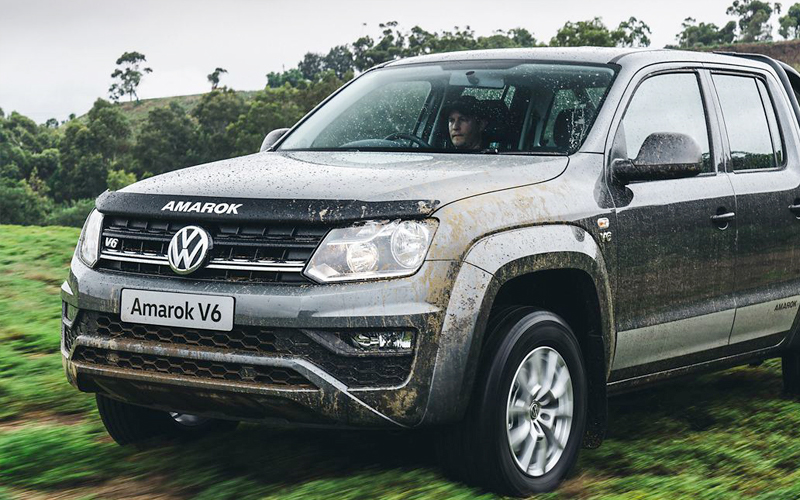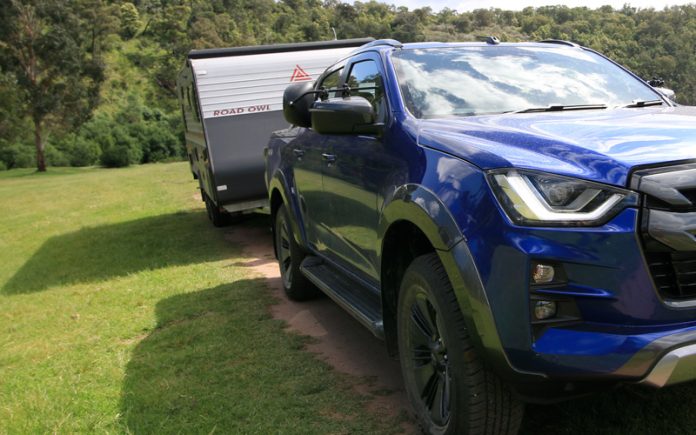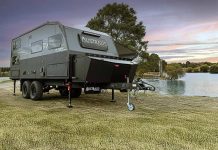For the last five years, the general motoring and RV media has talked about the unrealistic towing capacities of dual-cab utes available on the Australian market. Principally, we’ve been critical of the claimed 3500kg towing capacity and how unrealistic it is considering these vehicles’ low Gross Combined Mass (GCM) ratings.
As we begin 2021, you might think the manufacturers have gotten the message and given their vehicles more realistic towing capacities. Before we get too far into this, let’s recap the relevant specifications, what they mean, and how they apply.
Kerb Weight: This is the empty weight of the tow vehicle, with all necessary fluids and a full tank of fuel.
Gross Vehicle Mass (GVM): This is the maximum permissible weight the vehicle can be with everything loaded, including passengers, cargo and the towball weight of a connected trailer.
Gross Combined Mass (GCM): This is the maximum permissible combined weight of the vehicle and a connected trailer.
When you connect a trailer to a tow vehicle, the towball mass of the trailer is transferred to the tow vehicle in much the same way as putting any weight into the vehicle itself. For this reason, we must include the towball load in our GVM calculations.
However, when we look at GCM, we do not need to consider the towball weight separately as it is part of the trailer’s total weight, whether it’s connected to the tow vehicle or not. This transfer of mass is the source of much confusion among vehicle owners trying to assess if their rig is legal and safe.
The key to understanding this is to realise that the towball mass doesn’t magically disappear from the trailer’s weight when it is connected to the tow vehicle. It is still there; however, rather than resting on the jockey wheel of the trailer, it now rests on the rear of the tow vehicle. There is no need to add it again.
Therefore, to avoid any confusion, we will look at GVM and GCM separately and assess the remaining cargo capacity with the heaviest-allowed trailer (3500kg) trailer attached to the vehicle, assuming the maximum towball weight is 350kg (10 per cent of the trailer’s weight).
THE FORMULAS LOOK LIKE THIS:
• Against GVM, remaining cargo capacity is GVM less the Kerb Weight of the tow vehicle, less the maximum towball weight of 350kg.
• Against GCM, cargo capacity is GCM less the kerb weight of the tow vehicle, less the maximum towing capacity of 3500kg.
You might think these two figures should be the same. Unfortunately, that is seldom the case. The chart on page 23 shows the calculations for dual-cab utes on the Australian market that boast a maximum 3500kg towing capacity. We have included the discontinued Holden Colorado as it is still a popular tow vehicle. We have also chosen to show the topspec models of each vehicle, so these will be the heaviest of each model in their respective line-up.
The highlighted figures are the lowest of the two remaining payload calculations for each vehicle and the one you must take into consideration. As you can see, the available payload varies greatly between most vehicles. Most are limited by their remaining capacity against GCM, while just three are limited by their remaining capacity against GVM.
We’ll come back to this point later. To put these figures into perspective, you need to look at how much weight you may actually want to put into or onto your tow vehicle to see which of these has the capacity to carry that weight. See table on page 24.
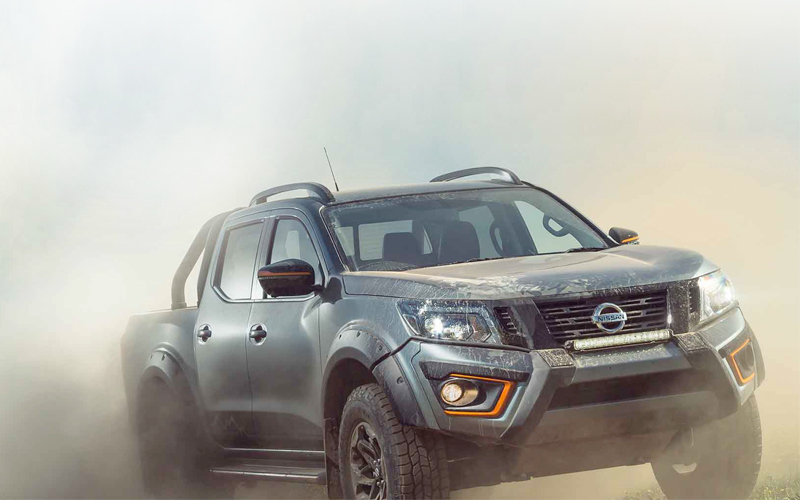
IT ALL ADDS UP
I think you can see where this is going. These items are what most travellers would consider being the bare necessities. We haven’t included extras, such as canopies, winches, additional luggage, dual batteries, or any other items you may want to store in your car.
Looking back at the vehicle list, it is possible to make the following observations: The Ford Ranger, Nissan Navara and VW Amarok are at the lower end of the scale. If you put anything more than a fridge and a slab of beer in them, there’s scant remaining capacity for anything else.
The Isuzu D-Max and Holden Colorado offer a slightly more useful payload capacity, with around 20kg available over the total weight of the basic gear listed above. Mazda’s changes to the BT-50 have certainly paid dividends when it comes to remaining payload with a big trailer in tow.
It now has close to a 200kg advantage over its Ford rival. The Dodge Ram is the largest and most expensive vehicle here and, according to the TV advertisements, it eats utes for breakfast. You would think it would beat all before it, but its remaining payload capacity sits around the middle of the pack. Perhaps a change of diet is in order.
WEIGHT SPECS: POPULAR DUAL-CUBS

WEIGHT SPECS: POPULAR DUAL-CUBS

The surprise vehicle for me is the SsangYong Musso. It’s the only vehicle here where the remaining payload figures against GVM and GCM actually make sense, both being 470kg. It’s also at the top end of the list and just 20kg less remaining payload than the much more expensive Mercedes Benz. While we’re on the subject of the Merc, its weight figures are both impressive and intriguing.
Given it is based on the Nissan Navara, you would expect the payload capacities of both to be similar. Yet the Mercedes has more than twice the remaining payload. There’s not a lot that can be said about the Toyota Hilux, except you’d have to be barking mad to buy the top-spec Rugged X model in order to tow a 3500kg caravan. Its remaining payload against GCM of just 34kg means, by the time you load a fridge full of beer, it’s overweight. You could opt for the SR-5 model, forgoing all the fruit in the Rugged X and reclaim 261kg.
That brings the remaining payload capacity up to a more manageable 295kg. Unsurprisingly, the vehicle with the highest remaining payload capacity is the venerable Toyota Land Cruiser 70 Series; however, this vehicle is only available as a bare cab-chassis. To ensure a fair comparison, you have to add a tray to the vehicle. Fitting an aluminium tray will add around 160kg to the base vehicle, reducing its remaining payload to 615kg – still the highest figure here and by a considerable margin.
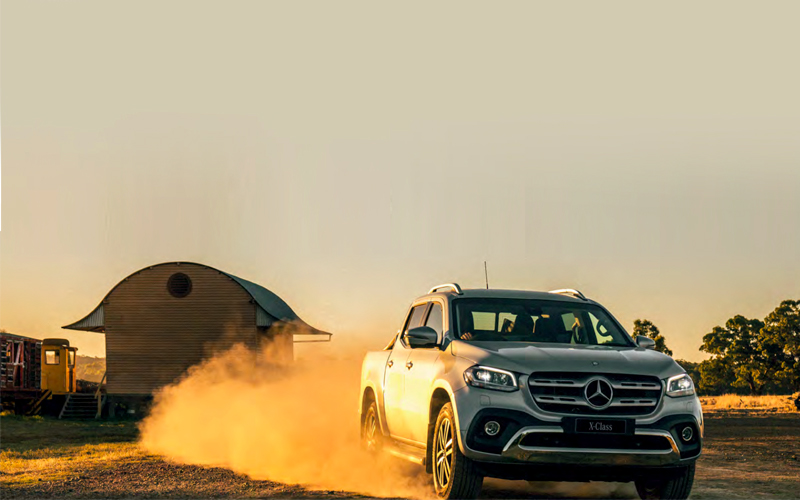
Obviously, we haven’t considered how any of the vehicles may physically perform with 3.5-tonne van in tow. This is a simple look at the manufacturers’ ratings and assessing how realistic they are from a legal perspective. In my opinion, the Toyota Land Cruiser 70 and the Dodge Ram are the vehicles I would recommend for towing 3500kg.
This is principally due to the fact their GVM is the limiting factor in their weight-carrying capacities. If you find you do not have enough remaining payload to suit your requirements, you can legally increase the GVM of these vehicles to bring the remaining payload on par with their remaining payload against GCM.
Being the heaviest of the vehicles here, they should also prove to be much more stable platforms for towing that kind of weight. If you’re not keen on upgrading the vehicle’s suspension, I would include the SsangYong, Mazda and the Mercedes in that list as well. They all offer a reasonable remaining payload against GCM, making towing 3.5 tonnes a realistic proposition. Whether they would be physically capable of towing that weight is a different matter.
SUMMING UP
I acknowledge it is possible to purchase a GCM upgrade for any of the other vehicles; however, the legal status of these upgrades remains a question of some debate. Finally, remember we have only looked at the top-spec models of these vehicles in this comparison, and only at how the weight calculations work out when hitching up 3500kg.
As we saw with the Hilux, you could choose to purchase a lower-spec model and have a few extra kilograms to work with. And of course, towing a lighter trailer would result in additional payload availability.
